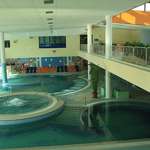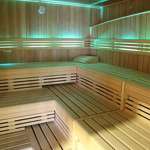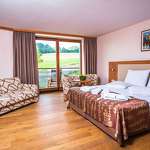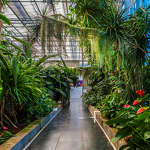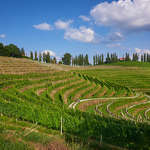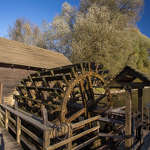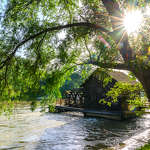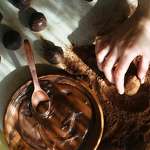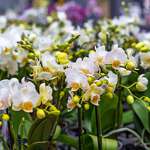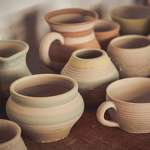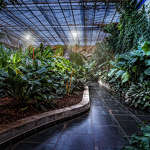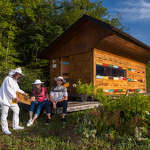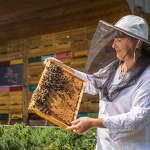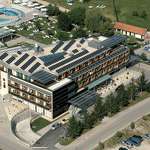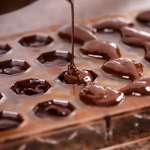
Bees and Wine
Apiculture also has its place in the eastern part of Slovenia. This area is a home to people famous for being excellent hosts thanks to their friendliness and kindness. Bee products, wine, chocolate, good food, hot springs and relaxation – you can find plenty of these on the plains of the northeastern Slovenia. Just like the Mura Rivers makes its lazy way between the hills and the plain, visiting this region relieves us from the stress and returns us to the calm waters of life.
OVERVIEW
DAY 1:
Our trip will begin among a swarm of working bees allowing us to see how the bee-keeper works, and observe apiculture and apitherapy. We will taste different sorts of honey, mead, honey wine, honey liquor and home-made honeybreads. You will be able to buy these home-made , completely natural products and take them home. The Mura River is at the heart of the region and has significantly contributed to the development and life of the locals through the centuries. Many mills used to be active here. At the Island of Love, we will take a look at how the mill functions and how millers and raftsmen live. We will taste the local type of snack to get our strengths back. Wine is part of Slovenian way of life, and wine-growing in this region is at the top level. This is why we will visit one of the many vineyard cottages and taste local wine. We will spend the late afternoon and the evening relaxing at thermal pools and wellness facilities as well as enjoying an excellent dinner.
DAY 2:
There is no sweeter way to begin a day than with high-quality chocolate. The locals create chocolate using a variety of tastes, even unusual ones. We will then visit an open-air museum to see pottery and the old way of building houses presented by skilled locals. Not far away, there is a gem of Slovenian architectural heritage – the Church of the Ascension designed by probably the most famous Slovenian architect, Jože Plečnik. Thanks to its snowy-white exterior, it is locally known as the “white dove”. After the visit, it will be time to stop for a true Prekmurje lunch with home-made products and wine tasting. To end the day, we will walk through a real tropical garden, which has grown in the middle of the Prekmurje plains. We will hear about the orchid growing and get to know this highly interesting plant.
PACKAGE PRICE PER PERSON
- Private tour with a guide and transport: from 275 €
- Group travel: from 199 €
THE ADVENTURE/PACKAGE INCLUDES
- Visit to the bee-keeper and bee-product tasting
- Island of Love with the local snack
- Visit to the chocolaterie
- Visit to the open-air museum at Filovci Pottery Village
- Visit to the Plečnik church in Bogojina
- Visit to the Ocean Orchids Tropical Garden
- 1 x local snack
- 2 x wine tasting
- 1 x lunch in a selected restaurant/tavern
- 1 x dinner
- 1 x night including breakfast in the Bioterme hotel****
For more information about trips and activities click here.
ADDITIONAL INFORMATION
- Program can be carried out from 1 May to 31 October, arrivals possible every day of the week
- the program is intended for groups of 2–7 persons and larger groups for which the program can be adapted
- Possible to combine two or more packages
- Tourist fee is included in the price
- Due to the Covid-19 situation, VIP tours and group tours are suspended until further notice.
Hotel Bioterme ****
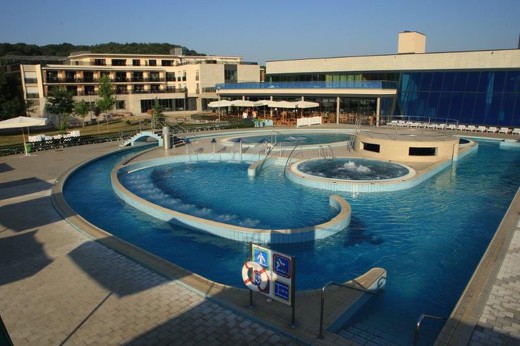
Hotel Bioterme is located in Mala Nedelja near Ljutomer, in the very heart of the Prlekija region. The hotel is the first environmentally-friendly hotel in Pomurje boasting the European environmental certificate EKO-LABEL or Eko Marjetica as well as the Slovenia Green Accommodation certificate.
Modern, healthy, hospitable – these are the guiding principles of this popular hotel where you can spend your holiday moments at the Thermal Park with 2000 m² of outdoor and indoor water areas, saunas and the fitness facility or go cycling, hiking or tours of the Prlekija and Prekmurje regions.
The Thermal Park features 5 indoor and 6 outdoor swimming pools, three of which are open in the winter. Children can play in the children's swimming pool with a slide. The Sauna World featuring five types of sauna will provide for your detoxification and offers numerous massages and couple pampering packages in baths for a romantic and relaxing break. If recreation is what you are looking for, look no further than the modern fitness facility.
The hotel offers 68 rooms furnished with solid wood furniture (oiled and waxed). The floors are hardwood, the walls are painted with bio paint, there are special electrosmog prevention switches installed … natural materials ionize the air and do not have a negative impact on the environment. Rooms are equipped with an LCD TV, air conditioning, mini bar and also feature free WiFi. Only two hotel rooms are without a balcony.
The hotel restaurant offers buffet meals for hotel and glamping guests. There is a BIO corner at breakfast serving organic foods, fresh bakery goods baked daily at our own bakery as well as select local products.
Mills on the Mura River
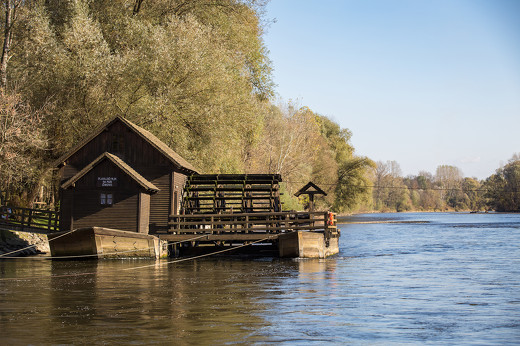
One of the distinctive features of Prekmurje used to be mills on the Mura River, but only two of them survive. The mill is powered by Mura’s water flow that turns the waterwheel. Some mills are fully floating, while for others, only the waterwheel floats on water. The floating mill at Ižakovci was built as a cultural attraction in 1999, representing a picturesque link between the present and the past. It provides a concrete example of how people used to live in harmony with nature, exploiting the force of water without exerting harmful effects on the environment. Before World War II, there were supposedly more than 90 such watermills on the Mura River. The still active Babič Mill is particularly interesting, as you can buy flour that was ground there. The traditional business of the Babič family has passed on from generation to generation. The first mill was built in 1928, while all waterwheels built by 1990 were swept away by the flooding waters. The current waterwheel is the fourth in a row.
Jeruzalem and Jeruzalem Wines
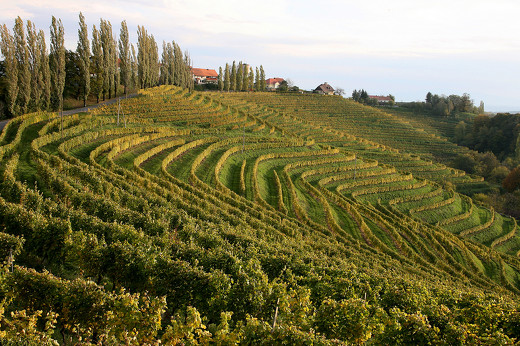
According to legend, the crusaders stopped here on one of the hills to rest during their travel to the Holy Land. They were warmly welcomed by the locals, who offered them wine that was just heavenly. The crusaders decided to stay there and name the place Jeruzalem.
Today, Jeruzalem is a picturesque village founded around Mary’s church from 1652. The church boasts the picture of the Mother of God, which is said to have been brought by the crusaders from the Holy Land. There is the Jeruzalem mansion next to the church, which is now transformed into a boutique hotel with a rich botanical garden well worth a visit. Jeruzalem is also the highest peak around, reaching 341 m. When the weather is clear, you can see as far as Lake Balaton.
In this part of Slovenia, people used to make wine long before the Romans came. The wine-growing hills of Ljutomersko-Ormoške gorice in Prlekija have always provided optimum conditions for making white wines. The vineyards enjoy plenty of sun, cool nights and soil rich in minerals originating from the era of the Pannonian Sea ten million years ago. The best vineyards in the region are located on top of the hills, which surround the gem of the region, the village of Jeruzalem. This is the place where some of the best wines are born.
Furmint Wine – the Pride of Jeruzalem
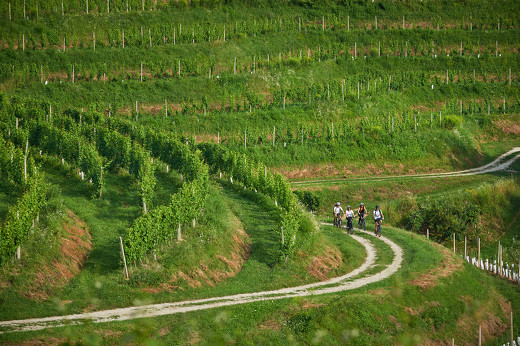
Furmint is a local variety considered the pride of Jeruzalem and Prlekija. It features an excellent character, distinctive freshness and rich taste.
According to legend, its name (šipon in Slovenian) originates from the times of Napoleonic wars. The locals offered a glass of their wine to the soldiers for refreshment, and the soldiers expressed their delight by saying: “C'est si bon!” (This is good!). The locals had difficulties understanding them and thought they said “šipon”.
Bird-scaring Rattle – the Guardian of the Vineyards
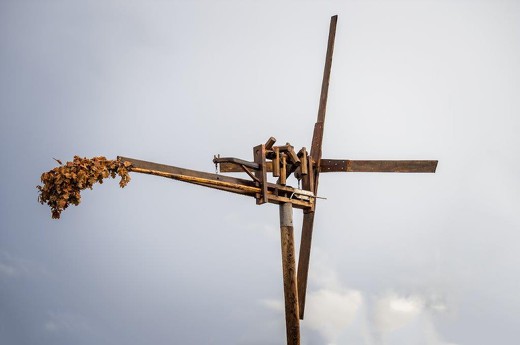
The bird-scaring rattle is the guardian of the vineyards and scares off the birds while the grapes mature. A traditional Prlekian bird-scaring rattle has four paddles, and each part is supposed to be made from a different type of wood. It is said it has a special power to protect vineyards, and not only against pests. Around here, the bird-scarring rattles are erected on the Assumption Day, 15 August, or even before, on St. Lawrence Day, 10 August.
At Hermanci, on top of the Prlekian Strmec Hill, there is the greatest bird-scarring rattle in the world!
Passero Country Chocolaterie
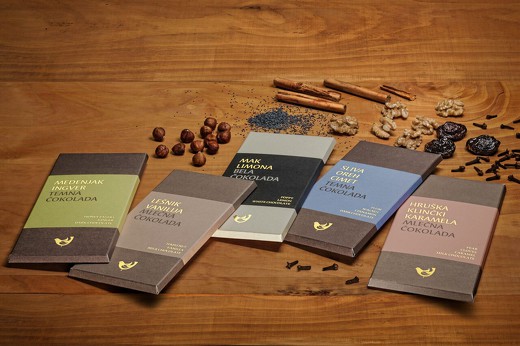
It all began just like in a fairy tale. Once upon a time, there was a young master called Tomaž who created delicious chocolate kisses for his beloved Jasmina ... The estate's tradition grew into exceptional chocolate delights enriching the wide range of local delicacies. You can taste and buy chocolate with the taste of pumpkin, the Prekmurje gibanica cake, the hurka grape or Traminer wine. Of course, you can also get the standard ones with hazelnuts or walnuts as well as others.
The estate also grows and makes other delicacies, allowing you can choose from a wide range of excellent products. The foodies will be excited about excellent wine, liquors, pumpkin oil, a number of spreads, jams and home-dried meats.
Jože Plečnik
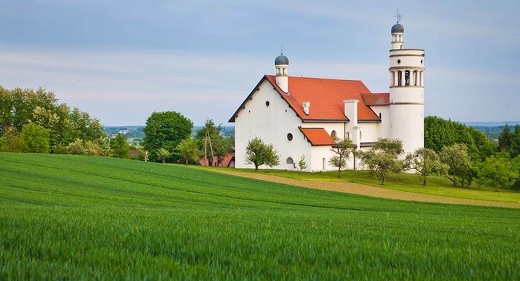
Jože Plečnik was born on 23 January 1872 in a modest house near the centre of Ljubljana as the third of four children. Since he did not excel in school, he father took him in to his joinery shop. Thanks to the state scholarship, he continued his schooling at the State Trades School in Graz and learned to be cabinet-maker and furniture designer. In Vienna, after a year of working with the architect Wagner, he enrolled in the academy in 1895. After three years of study, he graduated as the best in his class, which earned him the Roman grant allowing him to travel to Italy and France. Following his return, he stayed with Wagner for another year, and started an independent path in 1900. In this capacity, he renovated or built several buildings, notably the Zacherl Palace and the Church of the Holy Spirit. In early 1911, Plečnik was active in Prague as professor at the arts craft school, but during the first ten years he spent in Prague, he did not build much. The work at the Hradcany Castle and gardens did not begin until 1920 and were completed in 1934. The Czechoslovak President Masaryk asked him to create symbols of the new state that the people would recognise and follow. He absolutely succeeded. During the work performed on the castle, he also renovated the President’s residence at the Lany Castle and built the Church of the Most Sacred Heart of Our Lord at Vinohrady.
Almost at the same time when he was appointed the principal architect in charge of the Prague Castle renovation, he also took up the position of professor in the architecture department at the newly established University of Ljubljana. This was the time when his first work in Ljubljana was realised (old technical faculty, Spiritual Exercises retreat house and an annexe to an old house in Trnovo). Later on, he designed Saint Francis of Assisi Church in the Šiška district and the Church of the Ascension in Bogojina, the Orli society stadium, the Mutual Insurance building (now Triglav) and the Loan Society in Celje. The 1930s were the period of major urban development projects in Ljubljana, known from the literature as Plečnik’s Ljubljana. He gained world fame by genius solutions such as the Triple Bridge and the Covered Market, the arrangements of the banks of Ljubljanica as well as the Congress Square and Tivoli Park. Special mentions also go to the National and University Library, the Ursuline Grammar School, the Church of Sts. Cyril and Methodius in the Bežigrad district, the Žale Cemetery and the Church of St. Michael at the Ljubljana Marshes. After World War II, he built several memorials to the National Liberation Struggle, renovated the Križanke outdoor theatre, arranged the Kranj theatre, renovated the Church of St. Benedict in Stranje and the Church of St. Mary in Ponikve. Global architecture considers him to be one of the best architects of his era.
Pottery in Prekmurje
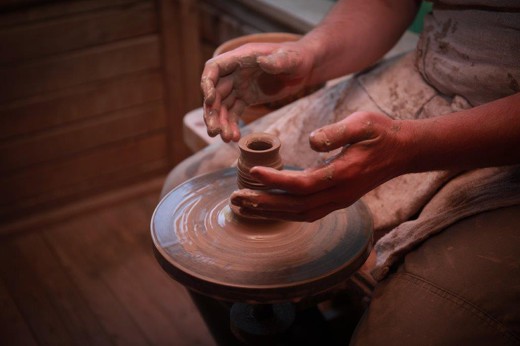
Less than 50 years ago, pottery used to be the most wide-spread craft in Prekmurje. In some parts of the region, clay soil was the source of the basic raw material. There were pottery guilds active in many villages. In some of the villages, there were dozens of potters operating. Villages that were highly known for the number of potters were Filovci, Kobilje, Bogojina, Tešanovci, Lončarovci, Sebeborci ...
Prekmurje is known for black pottery without glazing and with almost no decorations. Useful vessels were mostly made: vases, jugs, baking trays and narrowed-necked jugs known as pütre.
Ocean Orchids
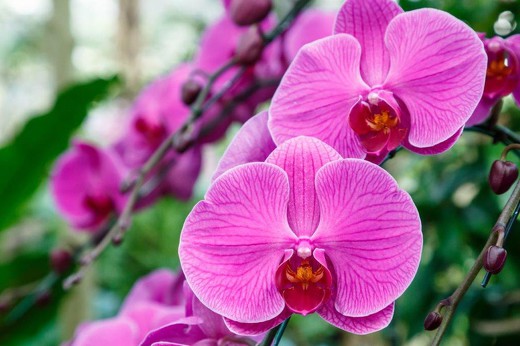
Ocean Orchids is a company dating back 10 years and employing 40 people. In a year, they grow two million orchids. The company is environment-friendly, as their way of growing orchids has the lowest carbon print in Europe. Their location provides a strategic advantage of using geothermal energy, which is one of the most important renewable energy resources. In the village of Dobrovnik, in a place covered by the Pannonian Sea a few million years ago, a tropical greenhouse was built. What looks like a simple idea at a first glance is a fruit of several years of research and development supported by youthful energy and passion for the unusual world of orchids. Their excellent results have proven that this way of cultivation in this part of Slovenia and Europe is highly efficient, as they use 20% less energy than other orchid greenhouses. Near the greenhouse, a geothermal well was drilled, which ensures water for heating the greenhouse and allows for a successful growth of tropical plants. The well drains 85% of the geothermal energy needed for heating the greenhouse. The production and sales at Ocean Orchids have the lowest environmental impact in Europe. Compared to other producers, their CO2 emissions into the environment amount to only 6%. As the only orchid growers in this part of Europe, they will continue to improve their carbon print and upgrade the technology by increasing the scale of growing tropical orchids.
Visit to the local beekeeper
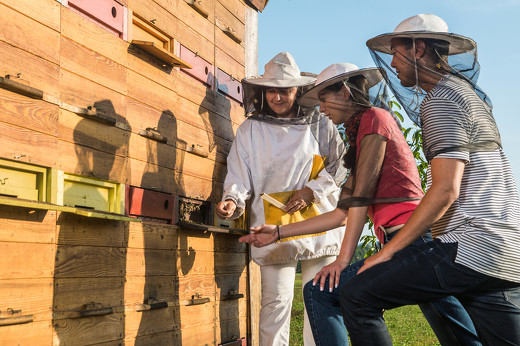
Beekeeping is a traditional agricultural activity in Slovenia; the beekeeper's main task is to harvest bee products (mostly honey) from the hives.
Picking honey from hives depends on hives, usually the back or upper part of the hive is removed. To keep the bees calm, they need to be "smoked", which means the bee smoker is used to calm them down. Then the beekeeper takes out the boxes with honey cells from the hive. He takes out full frames, and inserts the empty ones, so that bees can fill them. With a special tool he opens the cells and extracts the honey, which is then filtered, and the result is a dense sweet honey that is ready for use.
Most beekeepers occupy themselves with beekeeping because of the production of honey, but beekeeping is much more than just honey production. This is a very diversified activity and because of this, beekeepers have a good chance of developing entrepreneurial ideas in beekeeping. They can opt for a larger number of queens and bee families, focus on marketing and in the opening of sales space - e.g. home-made beekeeping rooms or produce quality Slovenian honey with a protected geographical indication. They may opt for the production of pollen or royal jelly.
Among the beekeeping devices are personal equipment and tools with which the beekeeper takes care for a tidy beehive. Personal equipment is necessary, each beginner as well as a beekeeper with several hives needs to have it, because he must be protected from bee stings. The basic equipment includes a protective net or headgear that can be placed on another headgear or is placed on a hat with wide ends. For the protection of hands, special gloves are needed, which have suitable design, with rubber above the palms, as they protect against the stings.
Among the tools is a hive chisel which is used to open the hive parts that are glued with propolis. It is also used to remove wax extensions. Small whisk broom is used to remove the bees from the honeycombs when the honey is poured. A small ash tool on a longer handle is used to clean the bottom of the hive. In addition to the basic tools, special claws can be used to pull out the honeycombs, while the paint spatula is used to clean the hives. The beekeeper also needs a source of smoke to sooth the bees. To this end, he uses bee smokers: manual bellows or bellows driven by a special mechanism.
In the past, beekeepers were using the cooked and dried wood mushroom. Among the beekeeper tools there are also accessories for marking the queen bees. In the accessories, there are four colours and nets to catch the queen during painting and drying of the paint. This device is not used if the wings of the queen are trimmed. Beekeeper ensures that the inventory, tools and equipment are always in good condition, and if necessary, the tools and equipment are further disinfected before use. The documents of the beekeeper are: the production plan, the analysis of the profitability of individual products, the calculation of operations, the list of investments in the new season, etc.
Beekeeper produces honey, pollen, propolis, royal jelly, beeswax and bee venom. (Bee venom is used for pharmaceuticals and homeopathy).
- H1 Hotel Bioterme ****
- 2 Mills on the Mura River
- 3 Jeruzalem and Jeruzalem Wines
- 4 Furmint Wine – the Pride of Jeruzalem
- 5 Bird-scaring Rattle – the Guardian of the Vineyards
- 6 Passero Country Chocolaterie
- 7 Jože Plečnik
- 8 Pottery in Prekmurje
- 9 Ocean Orchids
- 10 Visit to the local beekeeper
-
- VIP tour with tourist guide and transportation
- Group trip
-
No. of peopleConfirm
Transfer from the airport
Guests arriving by air will be offered comfortable transfers at competitive prices from close by airports. Our chauffeur will meet you at the arrival and will bring you back safely and on time
to the airport at the departure. You can cancel the transfer from your home to the hotel without expenses within 72 hours prior to scheduled transfer. You will receive the information about the exact time of departure a day before the scheduled transfer.
-
From - to:
-
Distance:km
-
Travel time:h
-
Type of transfer:One-way transfer
-
Price:€ per person
-
Number of people:
-
From - to:
-
Distance:km
-
Travel time:h
-
Type of transfer:Return transfer
-
Price:€ per person
-
Number of people:
Transfer from home to the hotel
Guests from northern Italy are offered the possibility of transport from home to the hotel. You can choose between
morning or afternoon directory term, the carriage is available for 2-7 passengers, reservation up to 5 days prior to departure. The notice of the exact time and location of departure one day prior to the tour.
-
From - to:BENETKE - MORAVSKE TOPLICE
-
Distance:km
-
Travel time:h
-
Type of transfer:One-way transfer
-
Price:€ per person
-
Number of people:
-
From - to:BENETKE - MORAVSKE TOPLICE
-
Distance:550 km
-
Travel time:5,5h
-
Type of transfer:Return transfer
-
Price:€ per person
-
Number of people:
Holidays in Slovenia portal.
You will receive an automatic reservation recapitulation on your e-mail address,
final confirmation will be sent upon payment.
You will receive an update on your reservation within 2 hours; if not, please, call us as soon as possible or send e-mail. Also check SPAM.
Thank you for your confidence and best regards.
HolidaysinSlovenia.eu


